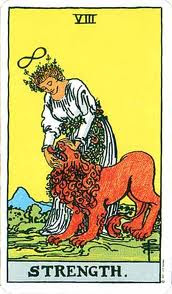The Reviews:
11,000 Years Lost, by Penni R. Griffin, at Charlotte's Library
The Aviary, by Kathleen O’Dell, at The Lupine Librarian
Bigger Than a Breadbox, by Laurel Snyder, at Finding Wonderland
Blitzed, by Robert Swindells, at The Children's War
The Book of Wonders, by Jasmine Richards, at Sprout's Bookshelf
E. Aster Bunnymund and the Warrior Eggs at the Earth's Core! by William Joyce. at Back to Books
Erak's Ransom, by John Flanagan, at Karissa's Reading Review
Eye of the Storm, by Kate Messner, at Page in Training
The Eyeball Collector, by F.E. Higgins, at Library Chicken
The False Prince, by Jennifer Nielsen, at Random Musings of a Bibliophile and Waking Brain Cells
The Familiars, by Adam Jay Epstein and Andrew Jacobson, at GreenBeanTeenQueen
Fangbone! Third-Grade Barbarian, by Michael Rex, at Jean Little Library
Ghost Knight, by Cornelia Funke, at Ms. Yingling Reads
Giants Beware! by Jorge Aguirre, at The HappyNappyBookseller
The Hero's Guide to Saving Your Kingdom, by Chistopher Healy, at Karrisa's Reading Review and Ms. Martin Teaches Media
The Last Olympian, by Rick Riordan, at A Librarian's Library
Liesle & Po, by Lauren Oliver, at My Precious
Magic Below Stairs, by Caroline Stervermer, at Random Musings of a Bibliophile
A Monster Calls, by Patrick Ness, at There's a Book
Mr. and Mrs. Bunny--Detectives Extraordinaire! by Polly Hovarth, at That Blog Belongs to Emily Brown
Princess Academy, by Shannon Hale (audio book review), at Bunbury in the Stacks
Remarkable, by Lizzie K. Foley, at Presenting Lenore
Renegade Magic, by Stephanie Burgis, at Charlotte's Library
Scary School, by Derek the Ghost, at Muggle-Born.net
The Storm Makers, by Jennifer E. Smith, at Charlotte's Library
The True Meaning of Smekday, by Adam Rex, at The Accidental Novelist (Writes Again)
Wildwood, by Colin Meloy, at Supratentorial
Authors and Interviews
Sue Cowing (You May Call Me Drog) at The O.W.L.
Sarvenaz Tash (The Mapmaker and the Ghost) at The O.W.L.
E.J. Patten (Return to Exile) at Project Mayhem
Christopher Healy (The Hero's Guide to Saving the Kingdom) at Books from Bleh to Basically Amazing
John Dickinson (the forthcoming Muddle and Win) at Scribble City Central
Todd Harris (illustrator of The Hero's Guide to Saving the Kingdom) at A Backwards Story
Philip Womack (The Other Book) at The Periscope Post
MG sff Giveaways (Please let me know of others!!)
The Magic Warble, by Victoria Simcox, at The Book Bag
The Hero's Guide to Saving Your Kingdom, at The Adventures of Cecelia Bedelia
Other Good Stuff
Icefall by Matthew Kirby (my review) has won the Edgar Award for best juvenile mystery!
Neil Gaiman's The Graveyard Book to become a Disney Movie...
The deadline for vote casting in the Children's Choice Book Awards is May third; mg sff is represented (although not exactly the books and authors I would have picked!
And finally, in the sub department of good stuff I never did, check out these photographs Jason Lee created of his kids (found at io9). Here's my favorite:



























